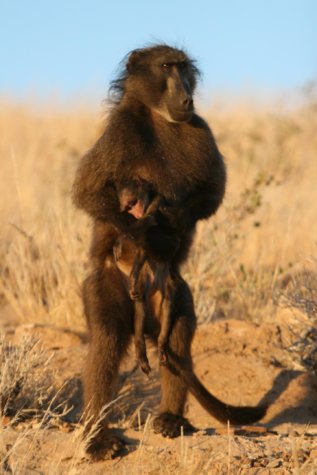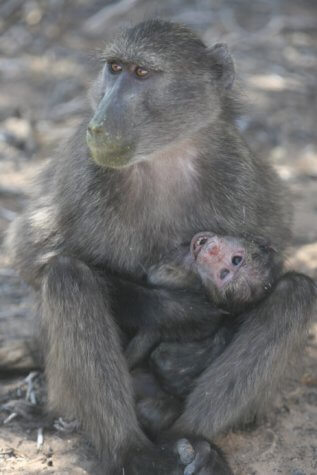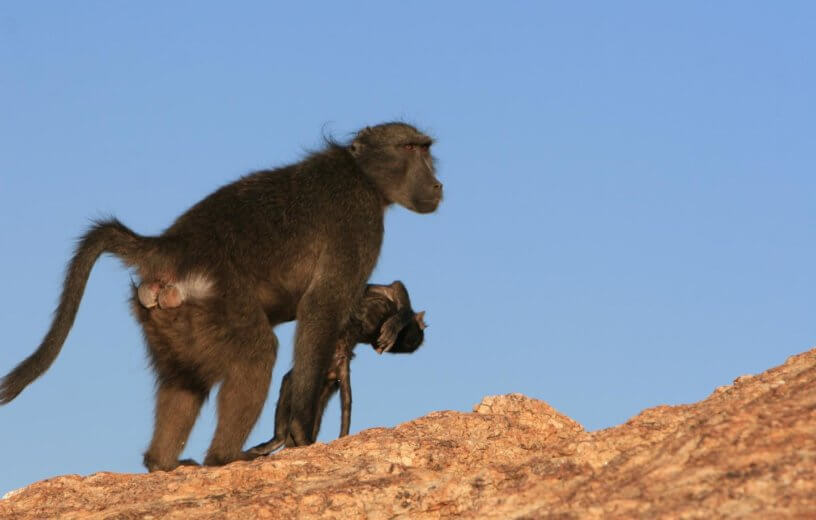LONDON — No parent should ever have to bury their child. Such a circumstance is perhaps one of life’s most cruel situations, and it’s something most would never wish on their most hated enemy. In an argument for true love in the frequently unforgiving animal kingdom, a new heartbreaking study finds that baboon mothers have an incredibly hard time saying goodbye when they lose their young.
Researchers from University College London and Université de Montpellier have discovered that baboon mothers often carry around their dead offspring for up to 10 days before letting them go. These findings come from the most extensive research initiative to date performed on baboons, spanning over 13 years. In all, 12 cases of baboon group responses to infants’ deaths were analyzed, including a miscarriage and two stillbirths.

More specifically, this study focused on wild chacma baboons living in the southern African country of Namibia. These primates are known to live in rather large multi-sex groups, complete with a complex social hierarchy of both male and female group leaders. Groups can be as small as 20 baboons, and as large as 100.
Over the course of their observations, anthropologists saw baboon mothers carrying around their deceased infants. Sometimes this would only take place for a matter of hours before the truth sunk in, while in other cases the mother would hold on for up to 10 days. On average, most mothers held on to their dead offspring for three to four days. During this period, the mothers would almost always continue to groom the dead infant.
“There are numerous hypotheses to explain primate responses to dead infants. Perhaps the strongest hypothesis is that carrying after death is an extension of nurturing behavior,” comments lead author, Dr. Alecia Carter in a release.
“We are not suggesting that the mothers are unaware that their infants are dead, but there is such strong selection on mother-infant bond formation that, once formed, the bond is difficult to break. It’s less clear why only some mothers carry or protect their dead infant, but I suspect that a range of factors influence this behavior,” she continues.
The researchers can’t say for sure why this is happening. But, they believe the “grief-management hypothesis” is perhaps the most likely explanation. Basically this theory states that the mothers continue to carry around their dead children as a grief-coping mechanism.

Another possible explanation is the “social-bonds hypothesis,” which theorizes that the mothers continue to carry their offspring due to the strong-social bonds they had formed with each other during the child’s life. Of course, there’s also the chance that the mothers truly don’t realize that their baby has passed away, mistakenly believing their infant is just unresponsive or asleep for an extended period. That last theory is contradicted, though, by the fact that the mothers are clearly treating the corpses differently than they would a living infant. Mothers were often seen dragging their dead offspring by a limb, a practice never seen with a healthy infant for obvious reasons.
In all likelihood, a number of factors influence the amount of time a baboon mother carries her deceased baby before letting go, including her own age, the infant’s cause of death, and climate conditions.
“Other primates have been observed carrying their dead infants for much longer periods of time. Chimps and Japanese macaques for example have been observed carrying infants for over a month. However, chacma baboons travel much longer distances on an average day and the desert environment is harsh, making it costly for a mother to carry her infant for long periods,” Dr. Carter says.
So, what about the infants’ fathers? Male “friends” of the mothers, which in most cases means the child’s father, were also frequently seen protecting the dead child; threatening other primates who came close to the body, and on one occasion, grooming the deceased infant just like the mother had done.
“This is quite surprising behavior, because it has rarely been reported by previous studies. Male baboons are not usually very paternal, but they regularly protect their infant from threats, especially from infanticidal attacks. That is where a male baboon kills another male’s offspring in order to mate with the mother,” concludes co-author Dr. Elise Huchard.
The study is published in Royal Society Open Science.
